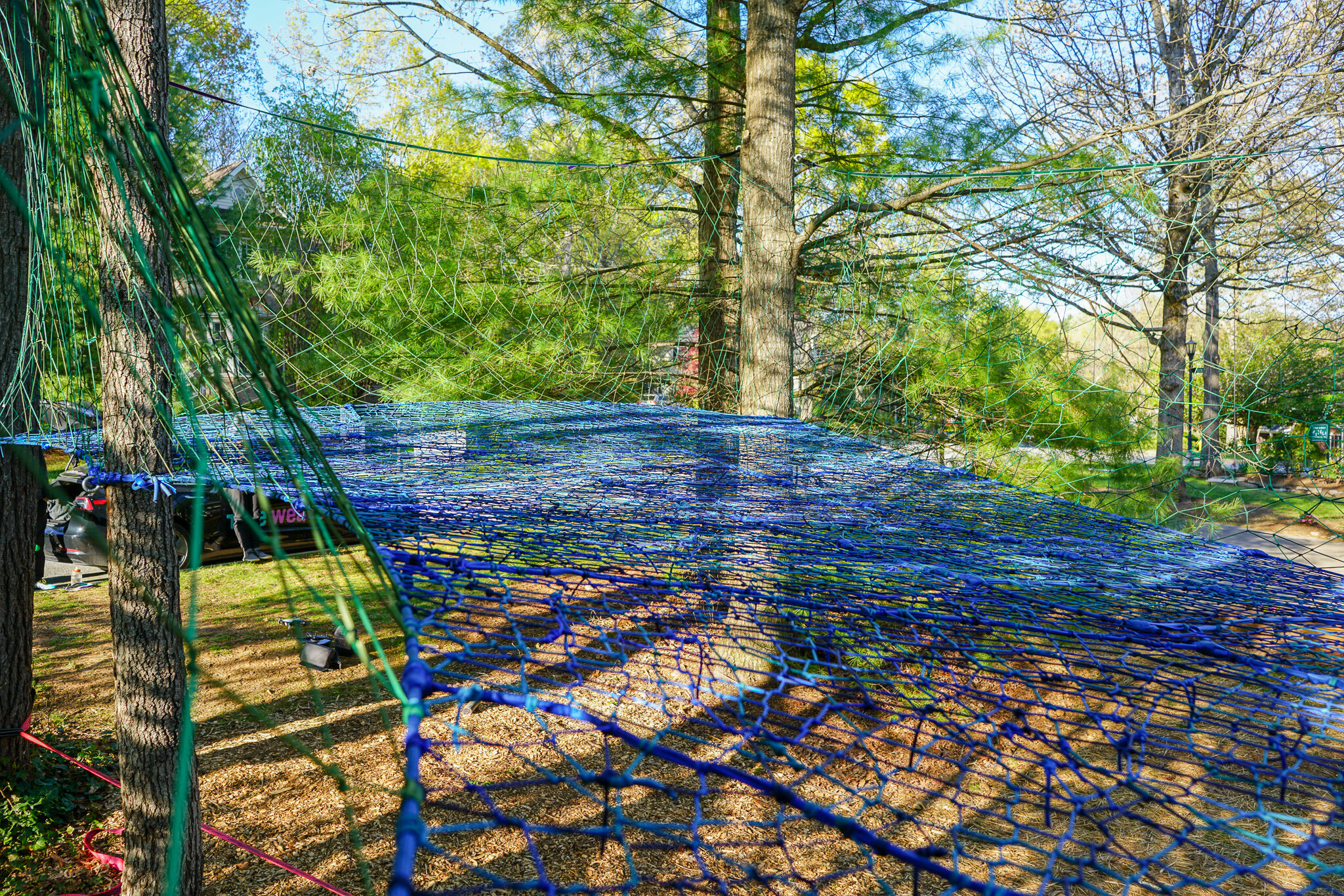Ramps
While we can anchor our entry/exit ramps to anywhere in the earth surrounding the tree net installation using earth anchors that hammer deep into the earth and get lodged underground, we prefer to anchor the ramps to any preexisting natural features that are available. The beauty of the art form of making tree nets is how the pieces conform to the natural environement like a spider web does. We aren’t building new structures to support our nets off of— we pride ourselves on using what’s available. This gives all of our tree nets a unique feature— The ramp isn’t necessarily coming off of where you’d put it if you were pre-designing these structures in a lab; it’s coming off a place where it has a natural ground anchor, and that makes each installation as unique and varied as the natural environment and the forest itself. Usually this means that we’re anchoring the bottom anchors of the ramp to the bases of nearby trees or sapplings, rocks, shrubs and bushes, man made structures like deck supports, walls, or concrete, or even dead stumps. In the absence of these natural anchors, we will place arrowhead anchors that are attached to wire eyelets that we hammer 3 feet underground. When we tension the anchors they twist underground and become lodged in the earth, making for super solid anchors that can hold thousands of pounds of tensile force.
Regardless of your situation, a ramp is the easiest and most accessible way to gain access to your Tree Weave playground installation. It’s generally our preferred way to offer access to the nets, but building them can add a lot of woven square footage to nets, so whether or not we add a ramp vs a ladder or another access way is sometimes determined by budget; other times it depends on the physical environment and our artistic choices. We like to do what’s obvious for the environment when we are allowed by the budget; if theres a perfect anchor for a ramp by say, a nearby sappling, and the budget permits it, we will add a ramp. However, if there’s two trees next to one another and we can make a simple taught rope step-ladder between them, we will opt for that because that’s what the natural environement is suggesting. We don’t like to force contrived design concepts into our installations.
The selection of ramps below feature a mix of natural and earthen anchors.










